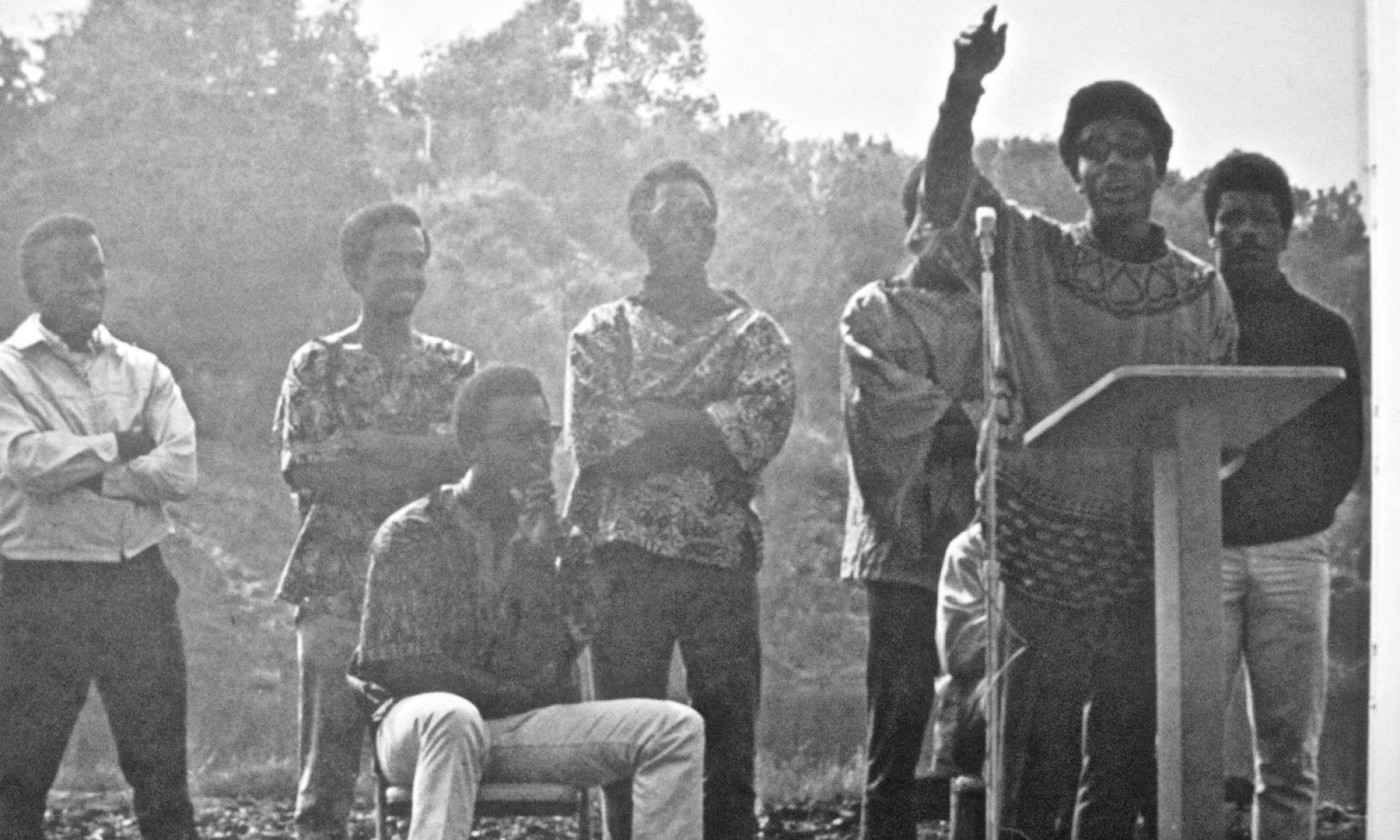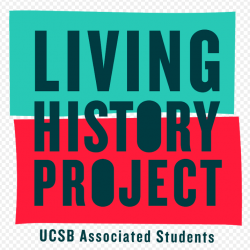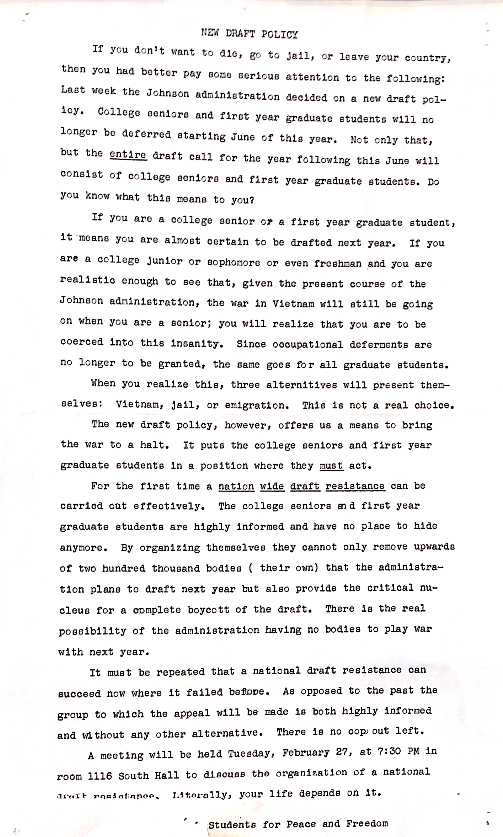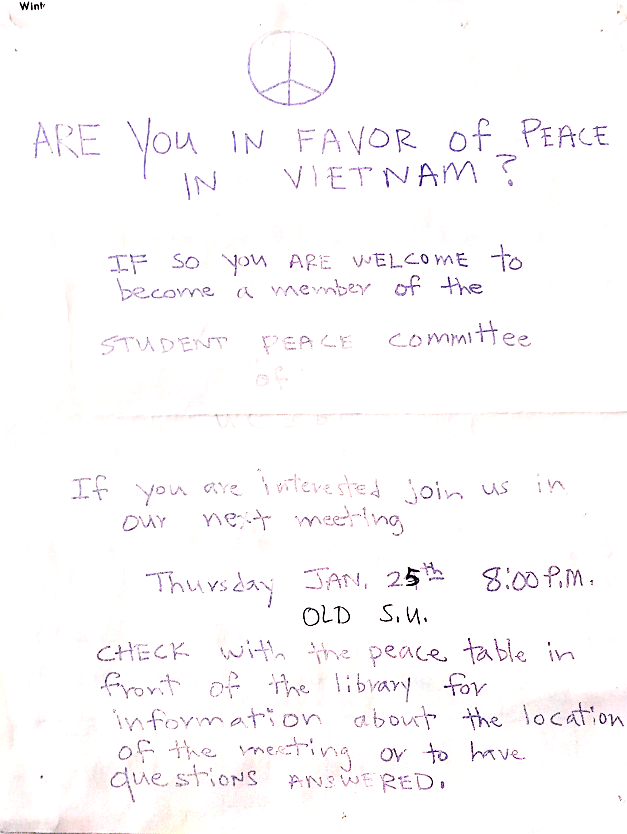By Jillian Wertzberger
The week of April 17th to April 22nd, 1972, students across the nation held demonstrations in protest of the war in Vietnam during “International Peace Week.” These demonstrations culminated in the “March for Peace,” sponsored by the Peace Action Coalition. The UCSB branch of the Student Mobilization Committee to End the War in Vietnam (SMC), employed various methods of communication, organization, and preparation to coordinate protests of civil disobedience on campus and in neighboring Isla Vista to express their disapproval of the Vietnam War.
In the early 70s, UCSB’s reputation had changed from that of a party school to a center of liberal dissent following the 1970 Isla Vista riots. A study conducted in 1971 showed that UCSB students believed that it was their right to take aggressive “militant” action against authority in order to meet their demands. Students were becoming more politically involved as Nixon implemented his plan of Vietnamization, while ramping up bombing campaigns in North Vietnam. It was against this setting that the Student Mobilization Committee to End the War in Vietnam sponsored anti-war activities leading up to two mass demonstrations in New York City and Los Angeles on April 22, 1972. Planned at a Cleveland Peace Action Coalition conference in December 1971, the March for Peace was the last major protest in response to the War in Vietnam.
International Peace Week
Tuesday, April 11
The Student Mobilization Committee showed the movie Winter Soldier in association with Vietnam Veterans Against the War. The express purpose of which was to build support for the Los Angeles march on April 22. This was a smart tactic to create pathos for the suffering of soldiers in Vietnam with the film, then directly after use the students’ outrage to fuel interest in the protest. Unlike many protest groups, the SMC strongly defended soldiers who did not support the war, working with them to distribute anti-war propaganda, and even publicizing cases of harassment of soldiers. Furthermore, the SMC was clearly planning weeks ahead for the LA march and demonstrated a remarkable level of organization in cooperating with the Vietnam Veterans.
Friday, April 14
Rhonda Ohme wrote a letter to the editor of the Daily Nexus, entitled “Don’t forget the war.” This letter intended to guilt students by comparing their sunny, party climate to the 300 “Indochinese” civilians killed by bombing campaigns every day. This letter told students to act on their beliefs and take responsibility in the anti-war movement by attending the upcoming anti-war march in Los Angeles.
Sunday, April 16
It is worth noting that the day before anti-war week began, Operation Freedom Porch, a bombing campaign over Haiphong, also began in earnest. Its goal was to strike a petroleum storage center in the area. Additionally, at 8 p.m. 35 students from Santa Barbara high schools, Santa Barbara City College, and UCSB met at the Isla Vista Legal Collective. These students endorsed immediate local action against the war in Vietnam and of the L.A. march, which demonstrates exceptional communicative and cooperative skills.
Monday, April 17
The Daily Nexus published an article titled “Antiwar week begins today” by Christy Wise. The article details many different strategies and activities that the SMC employed in order to generate interest in the march in L.A. On Monday, the SMC held a rally in Perfect Park which attracted over 300 people. However, from the number of protestors at Perfect Park compared to the number of students at UCSB in 1972 (12,400), one can infer that the dedicated antiwar protestors did not represent the whole of the student body. Additionally, other dedicated UCSB students used “guerilla theater” tactics when they, in collaboration with KCSB, played tapes of bombing campaigns and distributed flyers that read “If this was a bomb, you’d be dead.” Later that day, 200 students met in the University Center (UCen) lobby and discussed different antiwar measures, from sending postcards to the White House to sending guns to the North Vietnamese. These events all illustrate a frustrated and impassioned, if small, population that actively demonstrated against the war in Vietnam.
Tuesday, April 18
Bob Tedone of the Nexus reported on protests occuring at other campuses such as Stanford and Berkeley where he described the overall atmosphere as “apathetic” despite numerous protests. At UCSB, 200-300 students marched from the back of the University Center to the Administration Building and demanded that Vice Chancellor Stephen Goodspeed put an end to ROTC recruitment and war research on campus. Goodspeed reaffirmed the right of recruiters to be on campus. 200-300 students is notably a similar number of students compared to the attendees of the Perfect Park rally, and reinforces the notion that the dedicated anti war protesters were a small and dedicated group. This number was considered a poor showing and one of the speakers, Becca Wilson, commented that an aura of defeatism had permeated UCSB. Later that day, the SMC also showed Air War and Chemical War, two anti war films that show real combat footage, clearly trying to garner sympathy for Vietnamese civilians abroad and discourage apathy at home. All of these protests were efforts to encourage political participation in the L.A. march.
Wednesday April 19
A guest editorial in the Daily Nexus entitled “Campuses oppose warmaking” called for an immediate national student strike in protest of Nixon’s escalation of the war. 13 schools in total, including three UC’s and several ivy league schools, united in protest and decided to strike on Friday. The Nexus also released a special anti war edition, featuring guest editorials and cartoons. One editorial entitled “We must act!” encouraged students to attend Saturday’s March for Peace in L.A. The editorial urged students to take responsibility for the actions of the U.S. government, writing that each citizen is responsible for every dead civilian in Vietnam if he does not protest.
Also on Wednesday was a broadly appealing, if fairly disorganized rally protesting many things, from cuts to the minority students’ associations, to ROTC and the war in general. For example, speakers from the Legal Council tried to raise funds for minority associations right before the Young Socialist Alliance tried to raise support for a student strike. Chancellor Don Cheadle answered questions at the rally, reaffirming Vice Chancellor Goodspeed’s position that recruiters had a right to be on campus. However, he additionally reported that he had sent a telegram to President Nixon calling for a withdrawal from Vietnam and an end to bombing campaigns. After the rally, a group of about 50 students conducted a peaceful sit-in at the ROTC center in the face of six campus policemen. At Santa Barbara high schools, UCSB students distributed leaflets that promoted the march. Also promoting the march was Becca Wilson who gave a lecture titled “Electronic Battlefield” at the University Center, where the SMC was selling tickets for rides to L.A. Students present at the UCen unanimously voted to hold a candlelight vigil at Perfect Park the following day. More than anything, Wednesday demonstrates the wide variety of approaches to raising awareness and gathering support for anti-war causes.
Thursday, April 20
The Daily Nexus reported about campus student strikes and demonstrations across the country. Isla Vista held its own candlelight vigil in Perfect Park which had been organized the day before and advertised in the Nexus the day of, which demonstrates a strong ability to coordinate events on behalf of politically active students. Additionally, the SMC held a monitor training session in the UCen in order to ensure that the protests in Isla Vista and in L.A. would remain peaceful. This demonstrates an impressive level of preparation and forethought by the SMC. The SMC continued to advertise its organized transportation services in a letter to the editor of the Nexus, which ensured students that marching is a valuable protest tactic before reporting that tickets to the L.A. march would be on sale at the UCen for $1.50. In support of the SMC, Humboldt Hall in San Miguel Dorm stated in a letter to the editor that it had allocated half of its funds to purchase tickets to the L.A. march for residents of Humboldt Hall and other students unable to afford tickets. Additionally, the Nexus published an editorial in support of the student strike, encouraging students to meet behind the UCen at noon and to travel to Vandenberg Air Force Base. Explicitly, this writer wanted to contrast the peaceful protest with violence and weapons of war at the Base, and admonished students who did not protest as unempathetic. Clearly, the support and advertisement of the march ramped up as the week drew nearer to Saturday.
Friday, April 21
At the University Center, the SMC continued to sell tickets to the march. The Nexus also relayed when and where to meet for students who had purchased tickets on the front page. Three different editorials urged students to attend the March for Peace, often angrily railing against the apparent apathy of the student body. However, one editorial by a third year student titled “Disruption” admonishes protestors who disrupted a History 177 lecture in Campbell Hall by chanting slogans and encouraging students to leave class before finally departing, unsuccessful. The student declared while he was opposed to the war, he saw little use in this manner of protest. Clearly, attitudes were mixed at UCSB. While there was a general anti-war sentiment, there were varying degrees of expression of support to the cause. A dedicated group of students organized a banner-making session in the UCen lobby at 10 a.m. before a march at the Vandenberg Air Force Base. 200 peaceful demonstrators marched at the base carrying banners and singing patriotic songs. However, only about 40 of these were UCSB students because the base was 60 miles away. Those who could drive drove as many as they could and handed out flyers for the March for Peace to school buses and military personnel. The Vandenberg march had only been planned the previous day and thus shows a high degree of spontaneity among dedicated students. Finally on Friday, 200 devoted students (again a similar number to that at Perfect Park) went on strike in protest of the war.
Saturday, April 22
Christy Wise reported on the Los Angeles march in “L.A. hosts 12,000 for Saturday march,” reported in Monday’s edition of the Daily Nexus. Students at UCSB had hoped to draw crowds in the hundreds of thousands, while many naysayers said they would have been lucky to draw 20,000. The rally lasted for six hours and included speakers such as Dr. Ralph Abernathy from the SCLC and Anthony Russo, a defendant in the “Pentagon Papers” trial. Despite this poor showing, speakers celebrated UCSB because of the march on the Vandenberg Base the day before. Nationally, the March for Peace had sister marches in metropolitan areas such as New York City and Boston. Internationally, France also held its own march on April 22.
Response
Dan Hentschke wrote “New tactics necessary for action, change” which admonished UCSB students for their lack of political participation. Hentschke wrote that Isla Vista and Santa Barbara were infected with apathy and passivity. He believed that UCSB students’ participation in the L.A. march was “scant” and that the overall turnout was disappointing. Furthermore, he berated the general community that rolled its eyes at protestors who believed marches make change. Hentschke wrote that new “direct action” tactics are necessary in order to incite change. Earlier that week, one student wrote an editorial declaring that “March does no good,” saying that the government does not respond to civil disobedience or the actions of individuals. From these editorials, one can interpret that some students following the intense turmoil of the 1970 riots became even more politically active. Others, however, may have grown tired of the constant negativity in the news and believed that civil disobedience was not able to produce change. Nationally, a study collecting data on march attendees cataloged a noticeable decline in march attendance in the year range 1970-1973, which also supports the idea that the American public may have started to believe that marching and civil disobedience does not bring about change.
Works Cited
National Peace Action Coalition, Sponsor/Advertiser. March for peace, April 22. California United States, 1972. Photograph. Library of Congress, Yanker Poster Collection. https://www.loc.gov/item/2016648574/.
Student Mobilization Committee, “Film Winter Soldier,” 1972. Student Organizations Collection, [Box 4, Folder 34], Special Research Collections, UCSB Library.
Daily Nexus
1972 April 17: Christy Wise, “Antiwar week begins today,” 2.
1972 April 14: Rhonda Ohme, “Don’t forget the war,” 5.
1972 April 18: Bob Tedone, “War escalation meets protest,” 1.
1972 April 18: Charles Brown, “The birds of war take to the skies,” 4.
1972 April 19: Bob Tedone, “Bombs bring UCSB campus protest,” 1.
1972 April 19: Christy Wise, “Students protest new bombing by anti-war actions,” 1.
1972 April 19: Okamura, 10.
1972 April 19: “Campuses oppose warmaking,” 4.
1972 April 19: “We must act!” 9.
1972 April 20: Mike Gordon, “Cheadle faces protesters at minority rally,” 1.
1972 April 20: Howard Graham, “March does no good,” 4.
1972 April 20: “Dorms aid march,” 4.
1972 April 21: Christy Wise, “War and people march on,” 1.
1972 April 21: “What do to? Act!” 4.
1972 April 21: Tom Moylan, “See you in Los Angeles,” 4.
1972 April 24: Vandenberg sees peaceful protest,” 1.
1972 April 21: Mark Frei, “Disruption,” 5.
1972 April 24: Christy Wise, “L.A. hosts 12,000 for Saturday march,” 1.
1972 April 26: Dan Hentschke, “New tactics necessary for action, change,” 2.
1972 April 20: “L.A. Antiwar March OKd by Coalition.” Los Angeles Times, 1-d9.
https://search.proquest.com/docview/157040271?accountid=14522.
1969 June 5: Ron Wolin, “Student Mobilization,” The New York Review, n.p.
Marine Corps. (May 1, 1972). Command Chronology for the period 1 through 30 April 1972. Retrieved December 2, 2019 from https://catalog.archives.gov/OpaAPI/media/2442506/content/usmc/083/00005951.pdf?download=true
“John & Yoko at National Peace Action Coalition antiwar rally, Bryant Park, NYC April 22 1972,” Youtube video, posted by Peter Feld, April 22, 2012, https://www.youtube.com/watch?v=k-G8HHj3DK8
“SYND 22/04/72 ANTI-VIETNAM WAR DEMONSTRATIONS IN BOSTON,” Youtube video, posted by Associated Press, July 23, 2015, https://www.youtube.com/watch?v=5QqovCh0wFU
Smith, Robert, “The Vietnam War and Student Militancy,” Social Science Quarterly 52:1 (June, 1971) pp. 133-156. https://www.jstor.org/stable/pdf/42860063.pdf
Seidler, John, Katherine Meyer, and Lois Mac Gillivray. “Collecting Data on Crowds and Rallies: A New Method of Stationary Sampling.” Social Forces 55, no. 2 (1976): 507-19. https://www.jstor.org/stable/2576239?seq=1#metadata_info_tab_contents























